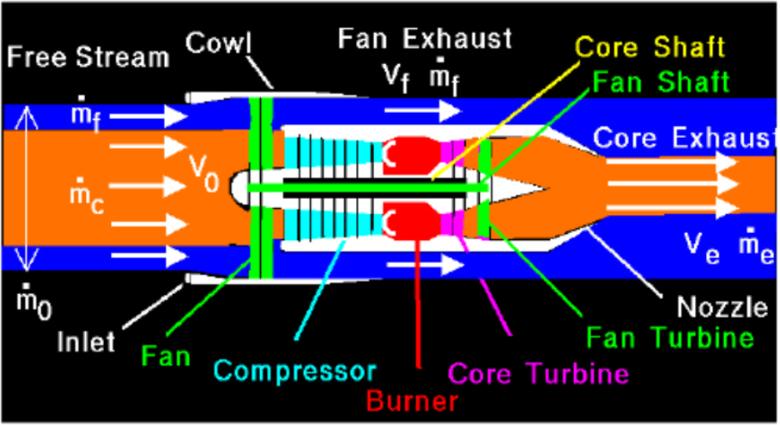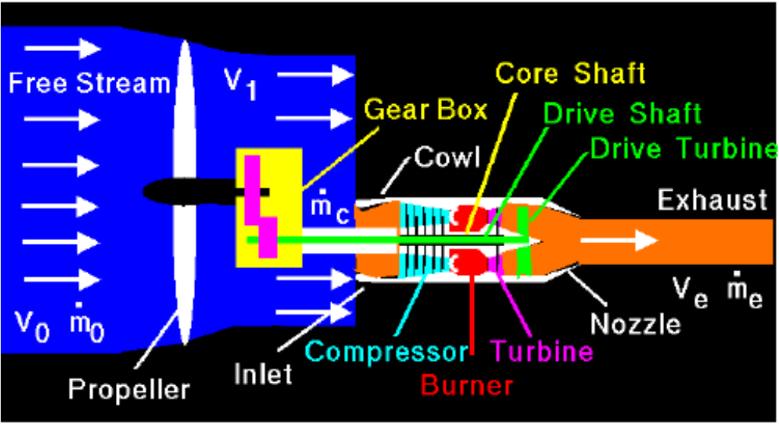Turbofan

Turbofan

The turbofan engine is a highly efficient variation of the gas turbine (or turbojet engine). In addition to the usual core engine components, the turbofan engine has a large ducted fan in front of the compressor. Some of the air that passes through this fan proceeds through the core compressor and on into the burner where the fuel is added and it is combusted. This hot exhaust then passes through core and fan turbines and then exits through the nozzle. This air is known as the "core flow". The remainder of the air that passes through the fan bypasses the core engine and is consequently known as the "bypass flow". This bypass flow goes around the engine and has a velocity that is only slightly greater than that of the freestream. The ratio of this bypass flow to the core flow is known as the "bypass ratio".
Click here for a closer look at the components of a turbofan.
The thrust produced by a turbofan is equal to the rate at which momentum is added to the air passing through the ening, thus it can be represented by the following equation:
T = (Vf - Vo)*mf + ([1+f]*Ve - Vo)*mc
where Vf is the bypass flow exit velocity, mf is the mass flow rate of the bypass flow, Ve is the core flow exit velocity, mc is the mass flow rate of the core flow, f is the mass ratio of fuel to core airflow and Vo is the flight velocity of the vehicle. Since
mf = B * mc
where B is the bypass ratio, the previous thrust equation can be rewritten as follows:
T = [(1+f)*Ve + B*Vf - (1+B)*Vo] * mc
Click here for more information on the turbofan engine.
Turboprop

The turboprop is very similar to the turbofan and it behaves, essentially,
as a turbofan with a very high bypass ratio. The major difference
is that the turboprop has a large propeller, as opposed to a ducted fan
preceding the compressor portion of the engine. Because of stress
reasons, the tip speeds of the turbine and propeller should be comparable.
However, the tip diameter of the propeller must be far greater than that
of the turbine because the volumetric flow rate of the propeller is much
greater. For this reason, a gear a gear reduction unit is connected
to the propeller to reduce its rotational speed from that of the turbine
that powers it. Like the turbofan engine, the turboprop gets thrust
from both its core and bypass flows, however, the vast majority of thrust
comes from the bypass flow as the core flow is used primarily to power
the fan turbine, as opposed to providing a sizable quantity of thrust.